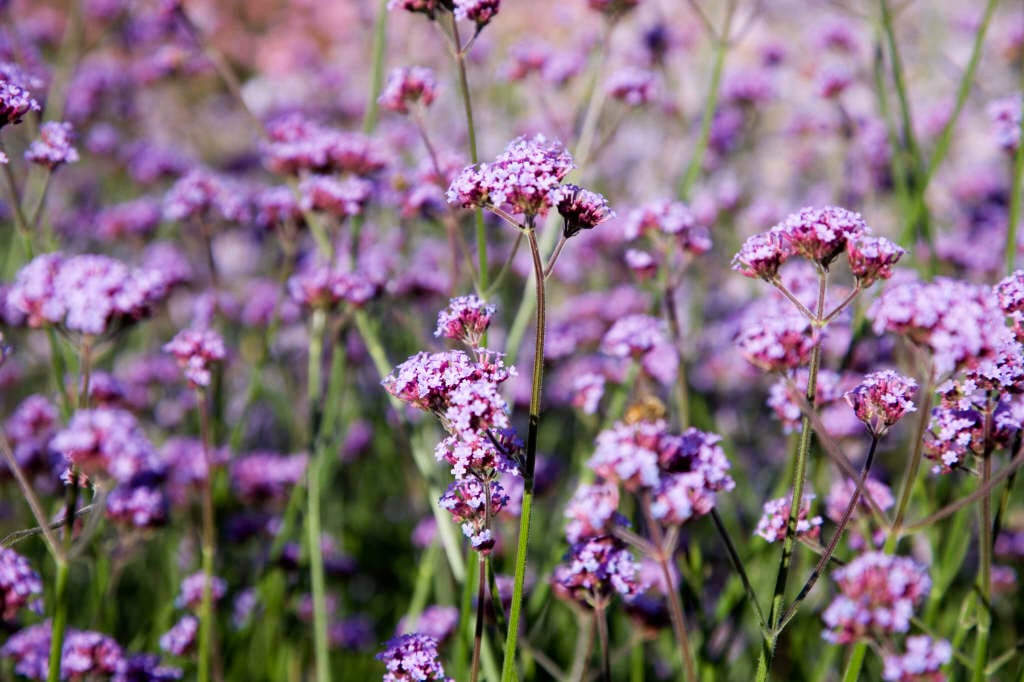Verbena bonariensis

purple top
A tall herbaceous perennial with erect, branching stems to 2m in height, bearing sparse, oblong leaves. Numerous branched clusters of small, lilac-purple flowers appear from summer to autumn; these are a good nectar source for pollinating insects
Synonyms
Verbena bonariensis 'Buenos Aires'Verbena brasiliensis misapplied
Size
Ultimate height
1.5–2.5 metresTime to ultimate height
2–5 yearsUltimate spread
0.1–0.5 metresGrowing conditions
Moisture
Moist but well–drained, Well–drainedpH
Acid, Alkaline, NeutralColour & scent
| Stem | Flower | Foliage | Fruit | |
| Spring | Green | |||
|---|---|---|---|---|
| Summer | Purple | Green | ||
| Autumn | Purple | Green | ||
| Winter |
Position
- Full sun
Aspect
West–facing or South–facing
Exposure
Exposed or Sheltered Hardiness
H4Botanical details
- Family
- Verbenaceae
- Native to GB / Ireland
- No
- Foliage
- Deciduous
- Habit
- Clump forming
- Genus
Verbena can be annuals, perennials or sub-shrubs, with toothed or pinnately lobed leaves and small, usually 5-petalled, salver-shaped flowers, typically held in spikes or panicles, in summer or autumn
- Name status
Correct
- Plant range
- South America
How to grow
Cultivation
Grow in moist but well-drained or well-drained, moderately fertile soil in full sun. In cold areas, protect with a dry winter mulch. May have the potential to become a nuisance due to prolific self-seeding if not well managed
Propagation
Propagate by seed in pots at 18-21°C in autumn to early spring or let it self-seed
Suggested planting locations and garden types
- Coastal
- Gravel garden
- City and courtyard gardens
- Cottage and informal garden
- Prairie planting
- Wildlife gardens
- Patio and container plants
- Wall side borders
- Flower borders and beds
Pruning
Cut down in spring as new growth emerges from the base; deadhead in autumn if seed is not required
Pests
Diseases
May be susceptible to powdery mildews
Get involved
The Royal Horticultural Society is the UK’s leading gardening charity. We aim to enrich everyone’s life through plants, and make the UK a greener and more beautiful place.
